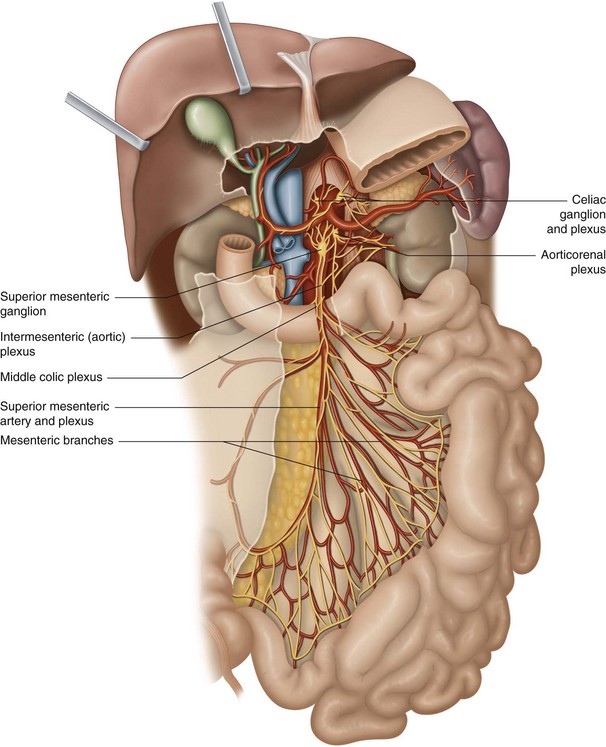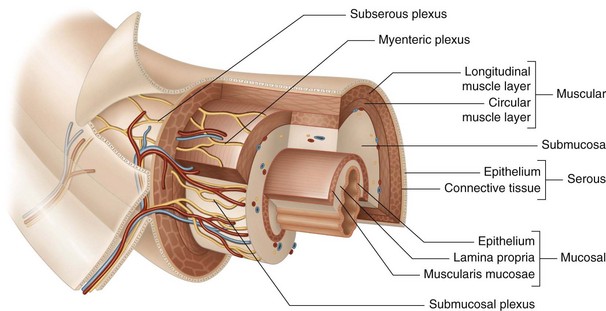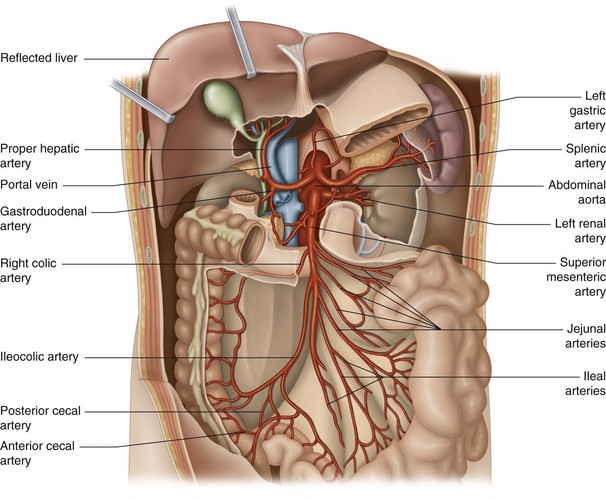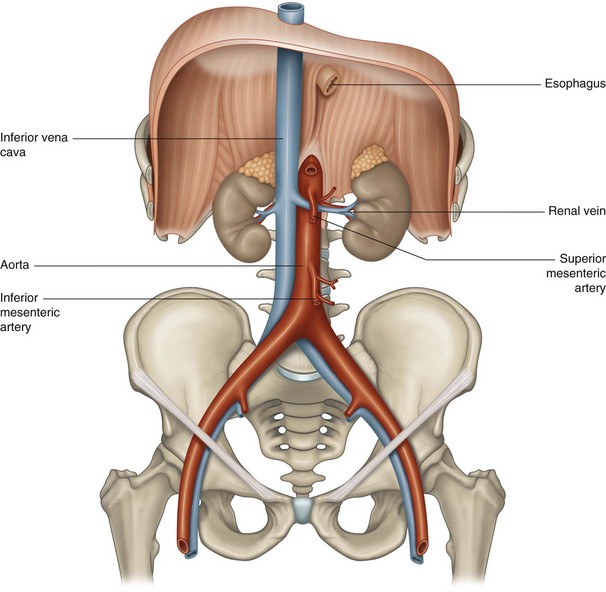29 Vessels of the intestine
29.1 Anatomy
29.1.1 Generalities
Intrinsic innervation of the intestine
The vascular system itself is under the control of the sympathetic system.
Endogenous reflexes of the intestine
Peristaltic reflexes are triggered by tension receptors, chemoregulators, and mechanoreceptors of the digestive tract. There are many pacemaker cells in the transverse colon, making the organ particularly interesting to manipulate (Fig. 29.1).
29.1.2 Vascular anatomy
Superior mesenteric artery
The superior mesenteric artery (Fig. 29.2) nestles against the medial surface of the duodenojejunal junction, at the level of L1. This junction projects on the mid-clavicular–umbilical line, about three fingerwidths above the umbilicus.
Origin and course
The superior mesenteric artery:
• originates from the abdominal aorta opposite L1
• is about one vertebral body height lower than the celiac trunk
• runs beneath the caudal border of the pancreas, where it is easily located
• is situated higher and to the right of the inferior mesenteric artery
• is more superficial than the inferior mesenteric artery, and thus easier to palpate.
Comments
The superior and inferior mesenteric arteries anastomose with the middle colic and left colic arteries (Fig. 29.3).
Aorta mesenteric clamp
In certain cases, the superior mesenteric artery can clamp the left renal vein against the aorta and produce lumbago and lumbar sciatic pain more commonly on the left (Fig. 29.4). The left kidney can also be affected by constriction of the superior mesenteric artery. In addition to local pain, lymphatic venous problems can involve the urogenital system. When the compression is severe, surgery is indicated.














